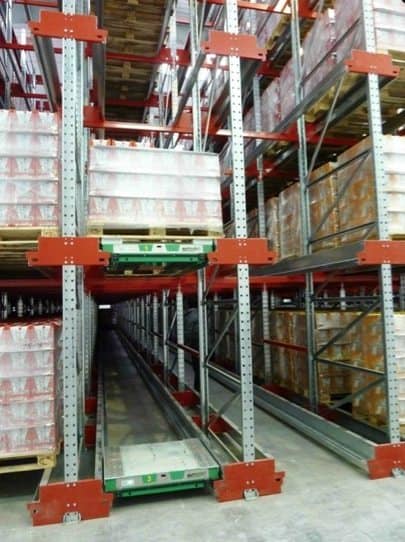Space Utilization and the Rule of 4
When planning warehouse storage solutions, two common challenges often arise: maximizing storage density while optimizing space utilization.
Traditional deep lane storage methods, such as drive-in, push-back, or pallet flow racks, focus on enhancing storage density. However, warehouse managers often find that lanes are only being utilized at around 60% capacity, leading to inefficiencies.
The “rule of 4” addresses this issue, improving both storage density and space utilization, reaching up to 87.5%. Here's how it works:
For SKUs (Stock Keeping Units) with an average of 4 pallets on hand, selective racking is the most effective storage method, offering both efficiency in space utilization and easy access.
Imagine storing 4 pallets in selective pallet racking. In this arrangement, operators can easily pick case quantities from each pallet, maximizing accessibility while maintaining storage efficiency.
- Initially, with all 4 pallets stored, you achieve 100% space utilization across the 4 storage slots.
- As soon as one pallet is fully depleted, space utilization drops to 75%.
- On average, 50% of the time, the pick slot (one pallet position) is only half full.
- This half-depleted pallet represents 25% of your total SKU storage, so:
- 50% of 25% equals 12.5% of the total SKU quantity.
- Therefore, on average, 12.5% of the storage space dedicated to the SKU is empty, leaving you with 87.5% space utilization.
Not bad, right? Achieving higher space utilization would likely result in too many aisles, while lower utilization would mean unused racking space.
To achieve the same 87.5% space utilization in double deep racking, you would need 8 pallets on hand.
Double deep racking is ideal for full pallet storage (push-back racking is better suited for case picking). With 8 slots dedicated to a SKU, if one pallet is missing, storage utilization will remain at 87.5%. If two pallets are removed, a different SKU could occupy the slot.
For drive-in racking, achieving 87.5% space utilization requires a greater quantity of pallets. In a system with 4 deep and 4 high drive-in racking, you'd need 64 pallets on hand. Here's why:
- To access pallets on the bottom row, all rows above must be cleared in the 4-deep run.
- To access pallets on the top row, all pallets on the lower rows must be cleared first.
- On average, a 4-deep, 4-high bay will be 50% filled or depleted:
- This results in an average utilization of 50%.
- To achieve 87.5% storage utilization in this system, 3 other rows must be fully stocked.
It’s important to note that drive-in racking is often more suitable for staging, where pallets are regularly loaded and unloaded.
When designing your racking system, remember to:
- Run a velocity report to assess the average number of pallets on hand for your SKUs.
- Apply the 80-20 rule to identify the 10% of SKUs representing 50% of your volume.
- Divide your average pallet quantity by 4 to guide your storage strategy.
- Look for common patterns to optimize your system.
Based on your inventory volume, here are some recommendations:
- If you typically have 4 pallets of high-volume inventory, single selective racking is a suitable option.
- For 8 pallets, consider using double deep racking.
- If you manage a larger volume of pallets, push-back, drive-in, or pallet flow racking systems may provide better efficiency.
Please log in to leave a comment.



No Comments Yet